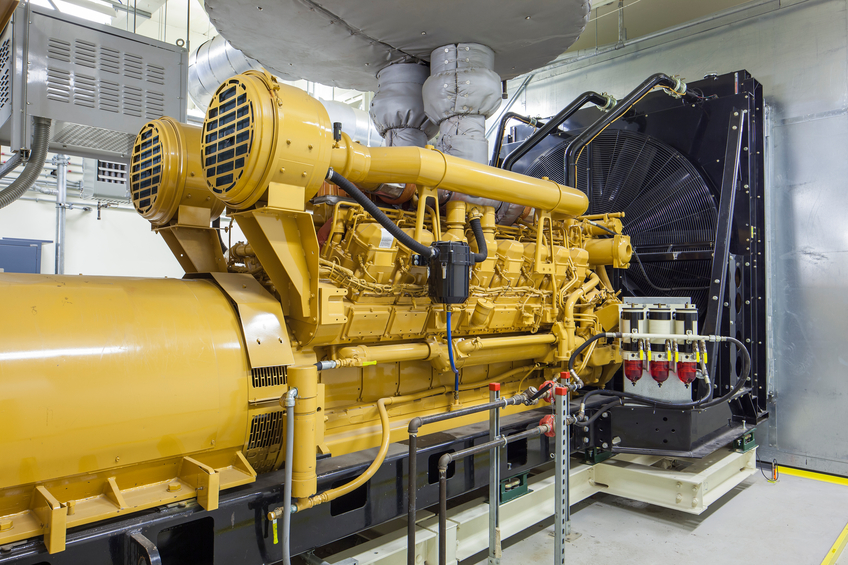Yukon Electrical 30 PDH Discount Package 1
Continuous Energy Improvement in Motor Driven Systems (E08-007)
Electrical Engineering Fundamentals: Motors, Generators & Power Distribution (E08-003)
Improving Motor and Drive System Performance (E06-006)
Motor and Drive System Basics (E02-021)
Understanding Motor Nameplate Information: NEMA vs. IEC Standards (E03-009)

This online engineering PDH course introduces the basic concepts of direct current (DC). It starts by describing the various types of DC sources. It explains the relevant DC circuit terminology. It demonstrates a series of basic DC circuit calculations by providing pertinent examples. It introduces conventional and electron flow and voltage polarity as well as defines Kirchhoff's Laws. Finally it discusses DC circuit analysis and faults.
This 3 PDH online course is applicable to electrical and computer engineers, design and construction personnel, technical staff and facility operators who are interested in gaining a better understanding of the theory of direct current.
This P.Eng. continuing education course is intended to provide you with the following specific knowledge and skills:
- Identifying DC sources
- Familiarizing with DC circuit terminology
- Performing DC circuit calculations
- Understanding voltage polarity and current direction
- Knowing Kirchhoff's laws
- Analyzing DC circuits and identifying circuit faults
In this professional engineering CEU course, you need to review Module 2, "Basic DC Theory" of the Department of Energy Publication DOE-HDBK-1011/2-92, "Electrical Science".
Upon successful completion of the quiz, print your Certificate of Completion instantly. (Note: if you are paying by check or money order, you will be able to print it after we receive your payment.) For your convenience, we will also email it to you. Please note that you can log in to your account at any time to access and print your Certificate of Completion.

This online engineering PDH course presents the fundamental information and necessary guidance required to assist the Manufacturing and Process industries in optimizing their electric motor driven systems which leads to substantial energy / cost savings.
Electric motors are among the least well-managed industrial equipment, even though motor-driven equipment accounts for approximately 70% of the electrical energy consumed by process industries and approximately 90% for electrical intensive industries. Motors that are not properly managed can result in billions of dollars in wasted energy and operating costs to an industry.
A detailed analysis of the U.S. motor systems inventory indicates that this energy use could be reduced by 11% to 18% if plant managers implement all cost-effective applications of mature and proven energy efficiency technologies and practices. It is worth noting that the suggested improvements are not necessarily limited to the U.S., but can be implemented in any industry around the world that utilizes motor driven systems.
This 8 PDH online course is applicable to electrical, mechanical, and industrial engineers as well as other technical personnel interested in learning more about improving the operation of motor driven systems.
This P.Eng. continuing education course is intended to provide you with the following specific knowledge and skills:
- Familiarizing with motor energy management and best practices
- Understanding the different types of utility charges
- Learning about the steps involved in conducting a motor survey
- Familiarizing with motor specification and selection considerations
- Estimating motor load and efficiency
- Analyzing motor efficiency opportunities
- Conducting plans for improving motor efficiency
- Familiarizing with the opportunities to improve system efficiencies
- Understanding the importance and practicality of power factor correction
Upon successful completion of the quiz, print your Certificate of Completion instantly. (Note: if you are paying by check or money order, you will be able to print it after we receive your payment.) For your convenience, we will also email it to you. Please note that you can log in to your account at any time to access and print your Certificate of Completion.

This online engineering PDH course introduces the reader to the concept of load factor, its role in power quality considerations and electrical energy cost reduction through peak shaving. Significance of electrical equipment service factor and voltage regulation of power distribution systems is highlighted. Electric power bill calculation in residential, commercial and industrial arena is illustrated.
DC and AC motors and generators are introduced. Basic principles and equations governing the operation and performance of electric motors are presented. Common calculations involving electric motors are covered, and illustrated through examples and self-assessment problems. The reader is introduced to the concepts of induction motor slip and the roles that slip and frequency play in determination of the motor shaft speed.
An exploratory tour of power distribution and safety equipment is conducted through the review of motor control center (MCC), power switchgear, electronic safety devices and variable frequency drives (VFD). Pictures and diagrams are used in this discussion to give the reader a "hands- on" feel of common electrical and electronic equipment.
This 8 PDH online course is applicable to engineers of all disciplines, as well as technicians, facilities managers and executives who are not intimately familiar with electrical engineering principles and practices.
This P.Eng. continuing education course is intended to provide you with the following specific knowledge and skills:
- Learning how to calculate load factor, service factor, motor slip and motor shaft speed
- Learning how to compute voltage regulation and electrical power bills
- Learning how DC and AC motors and generators are constructed and their operation
- Familiarity with power distribution and control equipment (switches, breakers, etc.)
- Introduction to state of the art electrical and electronic safety devices
In this professional engineering CEU course, you need to review the course document titled, "Electrical Engineering Fundamentals: Motors, Generators and Power Distribution" which is based on the principles in the book Electrical Engineering for Non-Electrical Engineers, S. Bobby Rauf, Fairmont Press, 2013.
E08-003 - APPENDICES
Upon successful completion of the quiz, print your Certificate of Completion instantly. (Note: if you are paying by check or money order, you will be able to print it after we receive your payment.) For your convenience, we will also email it to you. Please note that you can log in to your account at any time to access and print your Certificate of Completion.

This online PDH course presents the basics of motor and drive systems and briefly describes important terms, relationships, and system design considerations. It also provides a roadmap for finding opportunities to improve motor performance, as well as exploring the economics of motor systems.
Electric motors, taken together, make up the single largest end use of electricity in the United States. In the U.S. manufacturing sector, electric motors used for machine drives such as pumps, conveyors, compressors, fans, mixers, grinders, and other materials handling or processing equipment account for about 54% of electricity consumption.
To achieve cost-effective operation and maintenance of a motor and drive system, operators must pay attention to the entire system as well as to its individual components. Often, when investigating efficiency opportunities, operators are so focused on the immediate demands of this equipment that they overlook the bigger picture, which includes the ways in which system parameters affect all the equipment.
This 6 PDH online course is intended for electrical and mechanical engineers, contractors, manufacturers, building professionals and others interested in learning more about improving motor and drive system performance.
This P.Eng. continuing education course is intended to provide you with the following specific knowledge and skills:
- Detecting the indications of a poor system design
- Learning about the different types of electric motors
- Understanding motor operating characteristics
- Selecting motors and drives for their corresponding applications
- Understanding load duty cycles
- Familiarizing with common motor selection problems
- Understanding the framework for addressing seven efficiency opportunities
- Familiarizing with the steps that could be considered to improve motor performance
- Gaining a basic understanding of the economic considerations of motor systems
Upon successful completion of the quiz, print your Certificate of Completion instantly. (Note: if you are paying by check or money order, you will be able to print it after we receive your payment.) For your convenience, we will also email it to you. Please note that you can log in to your account at any time to access and print your Certificate of Completion.

This online engineering PDH course presents the basics of motor and drive systems and briefly describes important terms, relationships, and system design considerations. It also describes key factors involved in motor and drive selection and system design, and provides an overview of the different types of motors and drives and their applications.
This 2 PDH online course is applicable to electrical and mechanical engineers, designers, contractors, building professionals and manufacturers who are involved with motor and drive systems.
This P.Eng. continuing education course is intended to provide you with the following specific knowledge and skills:
- Detecting the indications of a poor system design
- Learning about the different types of electric motors
- Understanding motor operating characteristics
- Selecting motors and drives for their corresponding applications
- Understanding load duty cycles
- Familiarizing with common motor selection problems
Upon successful completion of the quiz, print your Certificate of Completion instantly. (Note: if you are paying by check or money order, you will be able to print it after we receive your payment.) For your convenience, we will also email it to you. Please note that you can log in to your account at any time to access and print your Certificate of Completion.

This online engineering PDH course provides a brief overview of how to read and interpret motor nameplate information, as well as highlights the major differences between NEMA and IEC motor standards.
One of the most important aspects of making motors interchangeable is ensuring that nameplate information is common among manufacturers. International standards such as National Electric Manufacturers Association (NEMA) and International Electrotechnical Commission (IEC) provide key electrical, mechanical, construction and reliability parameters on the motor largely to benefit consumer to expect "standard" motors from different manufacturers that meet or exceed the minimum performance parameters, and for the most part, be about the same size.
This 3 PDH online course is intended for mechanical and electrical engineers, energy auditors, service technicians, operational and maintenance personnel who are involved in designing, specifying, maintaining or replacing motors.
This P.Eng. continuing education course is intended to provide you with the following specific knowledge and skills:
- Who determines the nameplate information
- What does rated volts, FLA, Hz, PF, Torque or HP means
- What does time rating or duty cycle means
- What does rating temperature or the insulating rating means
- What does frame size and enclosure means
- What does service factor means
- What do motor design codes mean
- What does full load RPM and Synchronous speed means
- How does IEC terminology differ from NEMA standards
In this professional engineering CEU course, you need to review the document titled "Understanding Motor Nameplate Information: NEMA V/s IEC Standards".
Upon successful completion of the quiz, print your Certificate of Completion instantly. (Note: if you are paying by check or money order, you will be able to print it after we receive your payment.) For your convenience, we will also email it to you. Please note that you can log in to your account at any time to access and print your Certificate of Completion.